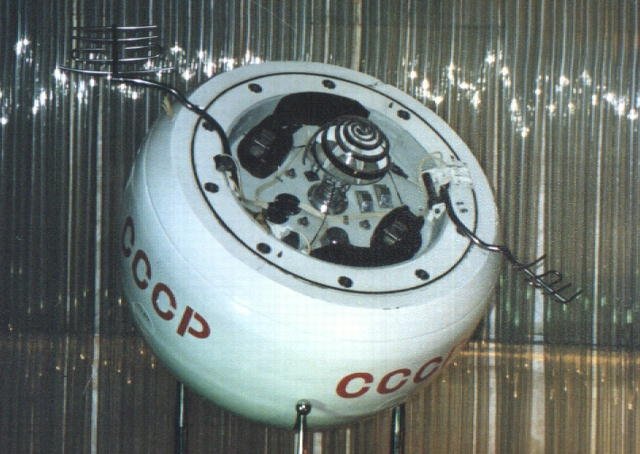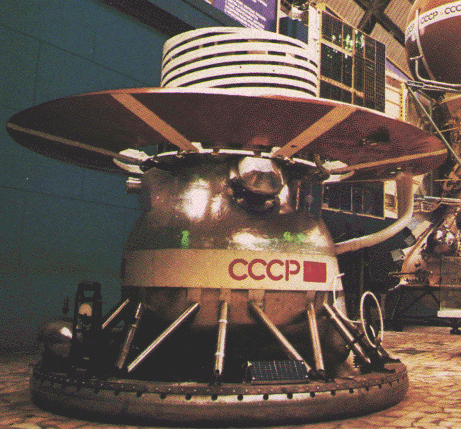
🚀 A Cosmic Return After Decades
The Soviet Venus lander parachute may have just made space history. In early 2025, satellite trackers and amateur astronomers captured images of what experts believe is a Soviet Venus lander tumbling through Earth’s upper atmosphere. But what truly amazed scientists and space fans wasn’t just the descent — it was the possible sight of a parachute trailing behind the spacecraft. The sighting of the Soviet Venus lander parachute re-entering Earth is drawing global attention in early 2025.
🌌 A Soviet Remnant of the Space Race
Experts think that the object represents Venera program launched by the Soviet Union in the 1960s and the 70s. The USSR launched these spacecraft in order to explore Venus.
Some Venera missions succeeded. Indeed, Venera 7 became the very first man-made space craft to land on another planet — Venus — in 1970. Others did not achieve their targets or ended up in wrong orbits.
It may come from one of those failed missions. It may be a back up unit or a test payload that never deorbited fully.

📸 The New Images: What We’re Seeing
The buzz started when @OrbitEye2025, an open source satellite tracker, posted imagery. It presented a metallic capsule that entered Earth’s atmosphere over the South Pacific.
In that week later, amateur astrophotographers in Australia and Chile took long-exposure pictures. These photographs revealed a bright flare following the object — maybe a partially deployed parachute.
According to astronomer Lena Horowitz from the University of Toronto, TrendInPakistan.pk reports.
“What we’re possibly witnessing is a spacecraft of decades using its original atmospheric descent system on the wrong planet.”
🎈 Can Soviet Venus Lander Parachute Actually Be Deploying?
That flare has a lot of scientists thinking the parachute theory seriously.
It was designed for Venera landers to withstand descent through the thick atmosphere of Venus. They had heavy-duty parachutes and braking systems.
If this capsule landed back on Earth at a shallow angle it may have set off the original descent system.
Multi-stage access systems were incorporated into various Venera probes. These were drogue chutes, heat shields, and pressure vessels – parts that could last decades in orbit and still work.
Whether the parachute had slowed the object or not, the object’s survival alone would speak volumes about the brilliant Soviet engineering. This strange fall has now become a vital area of focus for aerospace historians.
🌍 What Are the Consequences If It Reaches the Ground?
Majority of space junk burns up upon re-entry. But Soviet Venus landers were constructed like tanks. They could withstand 900 degrees Fahrenheit and 90 times the pressure of Earth.
Even if the parachute works a little, parts may survive the fall and land in one piece.
As at the time of writing, no impact zone has been confirmed. Agencies such as NASA, Roscosmos, and private space firms are attempting to detect those potential debris areas using radar and aerial teams.
One major concern? Unlawful recovery — by treasure hunters, collectors, or black market dealers.
🧭 Why It Matters in 2025
This story serves to remind us that space missions frequently outlive the original plan. Meanwhile, some pieces of the space race continue to orbit and surprise us as modern satellites fill our skies and Mars rovers hit the headlines.
Should this be confirmed, then this parachute drop could:
- Show how spacecraft materials stand the test of decades.
- Emphasize the strength of the engineering of the Soviet era.
- Ignite world-wide discussions on saving relics of space.
To many, this returning lander is more than just metal. It’s a link to the heady dreams of Cold War science and exploration. If confirmed, the Soviet Venus lander parachute could become one of the most bizarre surviving systems from the Cold War space era.
🛰️ What the Experts Have to Say
The space community all across the world is paying close attention. Historians from Germany’s Deutsches Museum and Smithsonian’s Air and Space Museum have shown an interest in salvaging the capsule for display.
Engineers are also comparing the object’s design to archived Venera blueprints. Their goal? Verify the identity of this forgotten spacecraft before it’s lost again…under the sea or private ownership.
📌 Final Thoughts: Venus to Earth – A Mission Completed?
It’s poetic. A space shuttle built for Venus’ skies drifts slowly towards home. It’s perceived not by Cold War scientists, but by a new generation upbrought on Mars missions and private spaceflight.
This instant proves that space never forgets. Our missions half a century ago reverberate to this day.
Stay tuned as experts attempt to authenticate the lander’s identity and follow its final descent. One thing’s certain: a new page of space history was just opened.
New images of Soviet Venus lander falling to Earth suggest its parachute may be out
Old Soviet Kosmos 482 Venus lander’s fall to Earth will be no ordinary space junk crash. Here’s why


